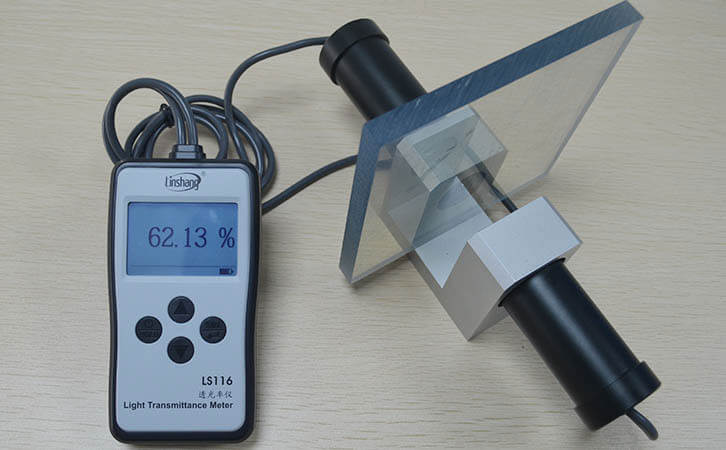What Are the Advantages and Application of Acrylic Sheet? | Light Transmittance Meter
1. Acrylic sheet introduction
Acrylic's Chinese name is transliterated from English Acrylics. The common Chinese names are acrylic. It is a general term for acrylic and methacrylic chemicals. Including monomers, plates, pellets, resins and composite materials. Acrylic sheet is polymerized by methyl methacrylate monomer (MMA), namely polymethyl methacrylate (PMMA) sheet organic glass, which is a kind of organic glass processed by a special process. The research and development of acrylic has a history of more than 100 years.
Acrylic board has crystal-like transparency. The light transmittance is above 92%. You can use the Linhshang light transmittance meter to detect the specific light transmittance value of acrylic sheet.
2. Acrylic sheet application
Acrylic board is mainly used for carving, decoration, crafts making. Extruded acrylic is usually used for making advertising signs, light boxes, etc. PMMA has the advantages of light weight, low price and easy molding. Its molding methods include casting, injection molding, machining and thermoforming. In particular, injection molding can be mass-produced, the process is simple and the cost is low. Therefore, its application is becoming more and more extensive. The acrylic board is widely used in instrumentation parts, automotive lights, optical lenses, transparent pipes, etc.
3. Acrylic sheet advantages
(1) Unparalleled outdoor weather resistance, the panel is coated with high-concentration ultraviolet absorber, and the metal base is sprayed with imported automotive paint, which can maintain long-term weather resistance and does not fade, and the service life is up to 5-8 years.
(2) The transparent plate is crystal clear and transparent, which is 200 times as much as glass products, and there is almost no danger of breaking.
(3) The surface has high gloss, smooth and flat, the light transmittance is as high as 93%, the light is excellent, the light is soft and dazzling.
(4) environmental protection, waste materials can be completely recycled, recycling is simple and easy. Good light transmission performance, correspondingly reducing light source products, saving power and reducing use costs.
(5) Excellent surface hardness and scratch resistance. The product has good protection for the built-in light source and prolongs the service life of the light source product.
(6) Good chemical resistance, better than most other plastic materials.
4. Acrylic sheet transmittance detection
Light transmittance is an important technical indicator of many optical products, such as glass, solar film, laminated glass, acrylic plate, etc. The test principle of the light transmittance meter is to use a visible light source to illuminate the test substance. The sensor detects the incident light intensity of the light source and the light intensity after transmitting the test substance, expressed as a percentage. The LS116 light transmittance meter uses a parallel light path design, which is suitable for detecting large thickness materials. The accuracy can reach within ± 1%.
The light source of this light transmittance tester complies with the CIE luminosity function, ensuring that it passes the testing of the Chinese Metrology Institute. It is also one of the best tools for us to choose high-quality transparent acrylic board! The LS116 portable light transmittance meter can be used to easily and intuitively test the visible light transmittance of colored glass. The LS116 light transmittance meter has the characteristics of small measurement error, high measurement accuracy, good stability and easy operation. It is widely used in transparent or translucent material manufacturing, commodity inspection and other testing fields.
- Linshang Insulated Glass Unit Measuring Tools
- Spectacle lens anti-blue light detection---blue-violet light transmittance meter
- Measurement of Optical Density
- Difference of LS116 Transmission & LS117 OD Meter
- Difference between LS116 and LS117 Light Transmittance Meter
- What’s the Difference Between Point Light and Parallel Light Transmittance Meter
